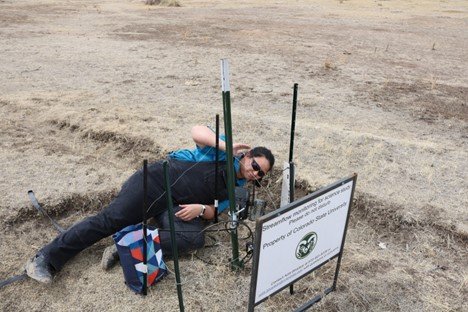Increasing urbanization and development efforts have led to observable stream impacts consistent and prevalent enough to earn the name Urban Stream Syndrome. Despite the recognizable and consistent symptoms of Urban Stream Syndrome, predicting and quantifying stream responses remains difficult throughout the stages of urban development.

Objectives:
- Establish a baseline for streamflow responses to rain events for a stream channel in a semi-arid rangeland.
- Assess how modifications to basin hydrology due to urbanization will affect changes in stream channel hydraulics and sediment transport.
Charter Summary:
Urban development in the intermountain west affects streamflow and stream morphology, but there are many challenges when it comes to accurately predicting and quantifying these changes. This is especially true for non-perennial streams as these streams tend to lack records for streamflow presence and absence. Quantifying how stream channels change in developing landscapes requires a historical pre-development baseline for comparison. This project focuses on a non-perennial stream channel in West Stroh Gulch, located in Parker, Colorado, an area south of Denver, U.S.A. West Stroh Gulch is a semi-arid rangeland just beginning to undergo housing development. Stream presence and absence is recorded at multiple locations along the stream network with time-lapse photography and compared with rain records. Time-lapse observations will continue through the stages of development to capture future stream channel responses to precipitation events and a changing landscape. In addition to continuing time-lapse photography observations, a hydraulic model of the watershed will be built as part of this project. Topographic pre-development data collected with drone flyovers is used to construct a DEM (Digital Elevation Model) surface of the watershed. This pre-development DEM surface will be combined with the post-development flows in the hydraulic model to predict post-development changes to the channel morphology. Model predictions can be compared with actual channel changes over time. Combining model predictions with ongoing observations will create a valuable case study of predicting pre- to post- development changes in a semi-arid rangeland’s non-perennial stream.
Transformation Network funded research on this Charter concluded in the summer of 2023, but publications are forthcoming. Learn more about this project and how it’s continuing on Aditi Bhaskar’s website.
Primary Contact
- Aditi Bhaskar (CSU)
Undergraduate Students
- Samuel Carles Pedroza (CSU)
- Amber Boyle (CSU)
- Liam Milton (CSU)
- Cameron Turnbow (CSU)
Team Members
- Ryan Morrison (CSU)
Community Partners
Graduate Students
- Dixie Lin Poteet (CSU)